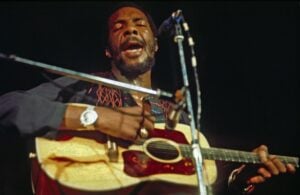10 Members Time-Bomb Personalities That Ripped Bands Apart

via 𝚃𝙷𝙴 𝙱𝙾𝙾𝚃𝙻𝙴𝙶 𝙼𝙰𝚃𝚁𝙸𝚇 / YouTube
Classic rock bands often faced internal conflicts that led to their downfall. These disputes, fueled by clashing egos, creative differences, and personal issues, sometimes overshadowed their musical achievements. Here are ten instances where individual members’ actions contributed to the disbanding of iconic groups.
1. Roger Waters – Pink Floyd
View this post on Instagram
Roger Waters, a founding member of Pink Floyd, increasingly took control over the band’s creative direction in the late 1970s. His dominance led to tensions with guitarist David Gilmour, especially during the production of The Wall and The Final Cut. Waters’ departure in 1985 was marked by legal battles over the band’s name and legacy.
The feud between Waters and Gilmour persisted for years, with both artists pursuing separate projects. While Pink Floyd continued without Waters, the original lineup never fully reunited, highlighting how internal power struggles can fracture even the most successful bands.
2. Joe Perry – Aerosmith
View this post on Instagram
In 1979, tensions within Aerosmith escalated when Joe Perry’s wife had an altercation with Tom Hamilton’s wife backstage. This incident led to a heated argument between Perry and Steven Tyler, resulting in Perry leaving the band. His departure disrupted the group’s dynamics and affected their subsequent work.
Perry formed The Joe Perry Project, while Aerosmith struggled to maintain their success without him. Although he rejoined in 1984, the episode underscored how personal conflicts can derail a band’s momentum and cohesion.
3. Paul Kantner – Jefferson Starship
View this post on Instagram
Paul Kantner, the last original member of Jefferson Airplane, left Jefferson Starship in 1984 due to disagreements over the band’s artistic direction. He believed the group had become too commercial and lacked the creative challenge it once had. Kantner’s departure led to legal disputes over the band’s name.
The lawsuit concluded with the remaining members dropping “Jefferson” from their name, continuing as Starship. This transition marked a significant shift in the band’s identity and sound, illustrating how internal disagreements can lead to substantial changes in a group’s trajectory.
4. Phil Anselmo – Pantera
View this post on Instagram
Phil Anselmo’s struggles with back pain led him to heroin addiction in the mid-1990s, creating a rift between him and his Pantera bandmates. Recording sessions became fragmented, with Anselmo working separately from the rest of the band. These issues strained their relationships and impacted their collaboration.
The band went on hiatus in 2001 and officially disbanded in 2003. The tragic death of guitarist Dimebag Darrell in 2004 further ended any hopes of a reunion, highlighting how personal struggles can have lasting effects on a band’s unity and future.
5. Jack Bruce – Cream
View this post on Instagram
Cream, formed in 1966, was plagued by internal conflicts, particularly between bassist Jack Bruce and drummer Ginger Baker. Their constant arguments and lack of cohesion during performances led to a tense environment. Eric Clapton, the guitarist, felt the band members were more focused on individual showmanship than collaboration.
The band decided to disband in 1968 after a farewell tour. Despite their short tenure, Cream’s internal discord serves as an example of how personal animosities can overshadow musical talent and success.
6. Dennis DeYoung – Styx
View this post on Instagram
Dennis DeYoung, a founding member of Styx, had creative differences with his bandmates, particularly regarding the band’s musical direction. In 1999, DeYoung’s sensitivity to light due to a viral illness delayed touring plans, causing frustration among other members. They eventually replaced him with Lawrence Gowan.
DeYoung sued the band over the use of the Styx name, leading to a settlement. Despite his recovery and interest in rejoining, the band continued without him, demonstrating how differing visions and personal issues can lead to permanent splits.
7. Axl Rose – Guns N’ Roses
View this post on Instagram
Axl Rose’s decision to bring in guitarist Paul “Huge” Tobias, despite objections from other members, created significant tension within Guns N’ Roses. Slash, the lead guitarist, felt the new addition lacked the necessary talent, leading to his departure in 1996. Bassist Duff McKagan followed in 1997.
With Rose as the only remaining original member, the band’s lineup changed drastically. The internal conflicts and departures illustrate how leadership decisions can impact a band’s stability and legacy.
8. David Crosby – The Byrds
View this post on Instagram
David Crosby’s outspoken nature and creative disagreements with other members of The Byrds led to his dismissal in 1967. His behavior, including controversial remarks at the Monterey Pop Festival, strained relationships within the band. Crosby’s departure marked a turning point, leading to changes in the group’s lineup and musical direction.
Despite the tensions, The Byrds continued to produce influential music, though they never regained the cohesion of their early years. Crosby’s exit highlights how personal conflicts can alter the course of a band’s evolution.
9. Don Felder – Eagles
View this post on Instagram
Don Felder’s relationship with fellow Eagles members Glenn Frey and Don Henley became increasingly strained over time. Tensions peaked during a 1980 benefit concert, where Felder and Frey exchanged threats on stage. This confrontation contributed to the band’s breakup shortly thereafter.
Felder was later fired from the band in 2001, leading to legal disputes over royalties and authorship. The conflicts within the Eagles underscore how personal and professional disagreements can fracture even the most successful groups.
10. Dave Mustaine – Metallica
View this post on Instagram
Dave Mustaine, the original lead guitarist for Metallica, was dismissed in 1983 due to his substance abuse and aggressive behavior. His departure occurred just before the band recorded their debut album, Kill ‘Em All. Mustaine’s exit led him to form Megadeth, another influential metal band.
The split between Mustaine and Metallica was marked by resentment and competition. While both parties achieved success, the incident highlights how personal conduct and conflicts can lead to significant shifts in musical careers and the formation of new bands.












